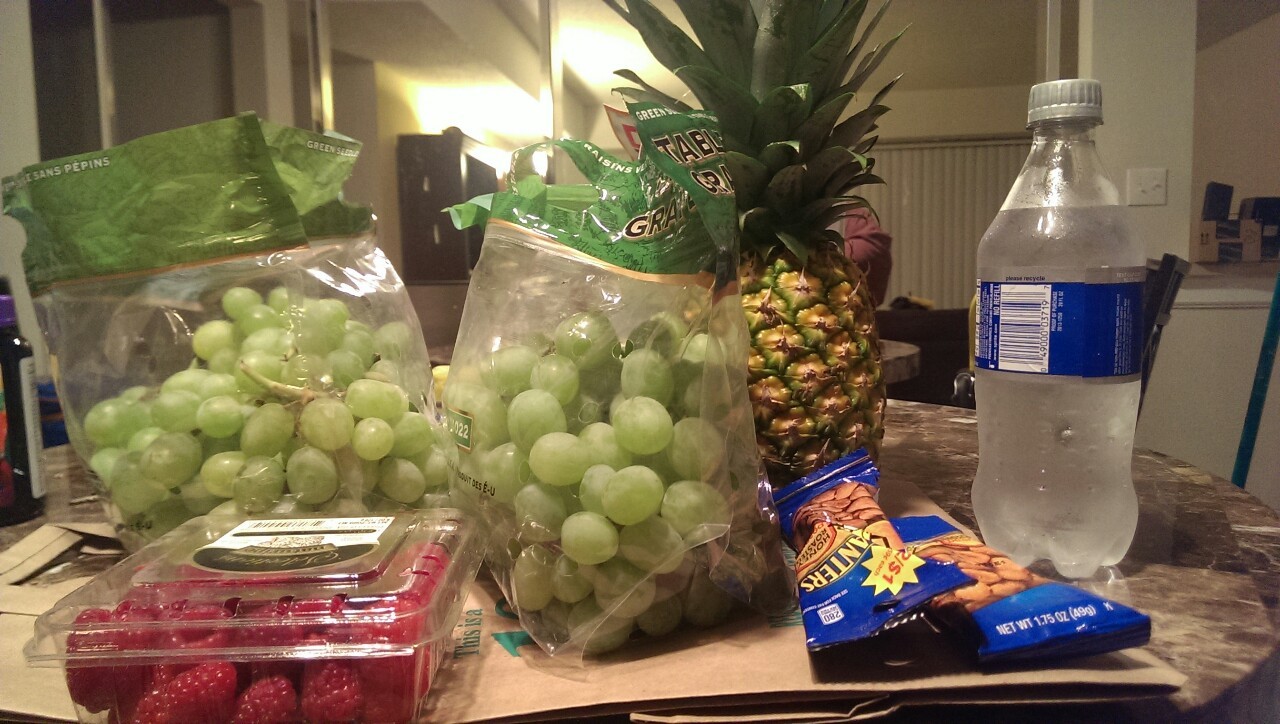Stop Shaming Poor People For Their Food Choices

The affordability of fresh, healthy groceries is something that most people don’t think about. But for families who struggle financially, it’s always top of mind. Going to the grocery store is fraught with difficult decisions because more often than not, trying to get the maximum amount of food to feed your family is paramount, but the costs of produce and healthy foods can quickly eat into your budget.
Therefore, many poor families are unable to meet their dietary needs because they literally cannot afford to meet them. A Tumblr post by user christel-thoughts shows this brutal reality, and just how expensive things like fresh produce can be.

I can totally relate to this message. My four-year-old son is already damn near four feet tall and has more energy than that pink Energizer bunny. It’s not surprising that he’s constantly hungry. The amount of shopping I have to do to keep him sufficiently nourished boggles the mind.
While I’m glad that he loves fresh fruit, produce isn’t cheap. In any given week, my produce bill alone can cost anywhere between 10 and 20 dollars. A week.
Most of the time, I only buy produce that’s on sale, which might extend my budget a bit. But even if I try to buy the least ripe container of strawberries in the store, they only have a shelf life of a few days before they start to rot.
For low-income families with dietary restrictions, a new barrier to accessibility is thrown up. For families who eat vegetarian or vegan, those costs add up too. And if you have to live gluten free, forget about it.
I have relied on my SNAP benefits to purchase the bulk of my groceries, but for a family of two, buying a lot of fresh produce on that budget is attainable. For bigger families, especially those who are receiving the similar benefits, they have to make that money stretch a lot farther. It’s easy for me to spend six dollars for blueberries, but a family of five may spend that same amount on something like ramen noodles or cheap frozen dinners.
Oftentimes it’s more economical to eat unhealthy foods. Thanks to coupons and app deals, a fast food meal can cost significantly less than a homemade meal. Given that many working families can barely make enough money to keep a roof over their heads, it changes their perspective and priorities. Many parents would love to be able to give their families more healthy food options, but the logistics of that are difficult, if not impossible.
I’m lucky that I live within walking distance of three sizable grocery stores. That means when my son goes through a week’s worth of apples in three days, I can throw my shoes on and run to the grocery store and be home again quickly. But for people who live in rural areas, or food deserts, it could be miles to the nearest grocery store. And there’s no guarantee that it’s a well-stocked grocery store.
Food deserts are a very real thing, and they greatly impact how people feed themselves and their families. According to the USDA, 2.1 million households, which is 1.8% of all households, fit the government criteria for a food desert — which is basically an area where there isn’t access to healthy nutritious food, either because of income or because of low access.
Since a food desert is described as an area with limited access to healthy food, it doesn’t mean that people who live in food deserts are starving. It’s just that the food they do have access to is likely fast food or processed foods high in sugars and sodium. It is no coincidence that, in these areas, obesity is often prevalent. After all, when you’re surrounded by fast food and your access to fresh produce and healthier food options is limited, you’re going to eat what you can get.
That’s why the argument that poor people should just eat better is so damn frustrating. It’s just not that easy to do. For some people, it means asking friends for rides to get to the grocery store and staying beholden to someone else’s schedule. For others, it means time on public transport if it’s reliable. For others, it means risking paying the electric bill in order to buy something as standard as broccoli or a head of cabbage.
Poor people do not always have the choice to eat the healthiest food. Sometimes eating things like fast food and heavily processed food are their only options for a meal. Making sure their families are fed is the top priority.
People who choose to shame the poor for their food choices are usually people who have lost the ability to be empathetic to the struggles of poor people in this country. Shaming poor people for the way they eat is steeped in privilege — the privilege of having been able to move out of poverty, or the privilege of never having been poor in the first place. Struggling to feed your family is hard enough without the judgment of strangers.
This article was originally published on